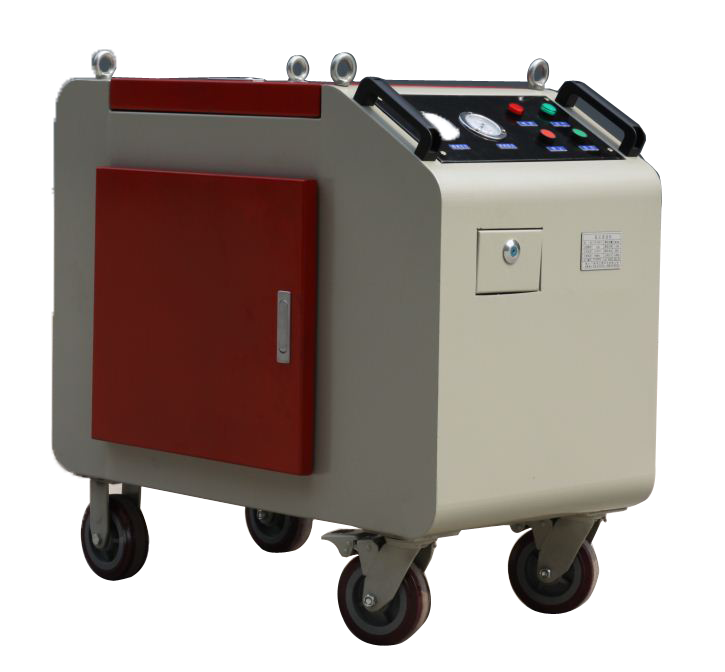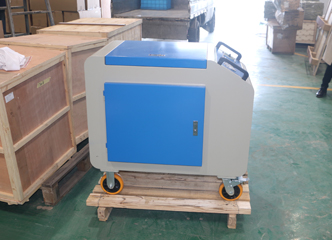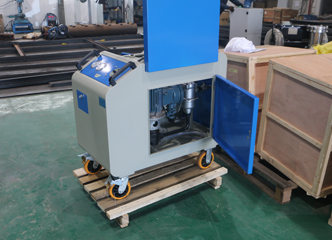In today's industrial landscape, the need for high-quality, efficient, and reliable oil purification systems has never been greater. This demand has given rise to innovative solutions that ensure optimal performance and longevity of machinery. Among these solutions, the LYC-C Box-Type Mobile Oil Purifier stands out due to its unique capabilities and comprehensive features.
The LYC-C box-type mobile oil purifier is especially beneficial for hydraulic systems comprising precise components such as servo valves and proportional relief valves. Its uniqueness lies in its potential to adapt to a variety of oil-working conditions, making it a versatile tool in any industrial setting.
This oil purifier can be customized to meet actual working conditions, thus adding a layer of practicality and effectiveness. It delivers a dual solution by purifying new oil as well as filtering out contaminants, ensuring high purity for operational excellence.

Unmatched Features and Benefits
The LYC-C box-type mobile oil purifier boasts an array of remarkable features. It adopts a special pump specifically designed for high-viscosity oils, facilitating smooth fluid conveyance without pulsation. Its low noise level contributes to a quieter operational environment, resulting in reduced stress and fatigue among employees. It also presents strong self-priming abilities and stable operation, reinforcing its reliability and robustness.
What sets the LYC-C apart is its capability to filter a variety of corrosive media. This makes it especially appropriate for high viscosity oil. With optional heating functionality, it can heat the oil up to 120°C, an indispensable feature when the operational temperature is low, or the oil's viscosity is substantial.
Safety measures are also well incorporated into the LYC-C's design. The pipeline features an overflow protection device, proactively safeguarding the hydraulic system's integrity. Additionally, this oil purifier adopts thermal relay protection to prevent any motor damage resulting from overload, making it a dependable choice for an array of oil-purification applications.
User-Focused Design
The LYC-C box-type mobile oil purifier showcases a level of sophistication and user-friendly design that is hard to match. The coarse filter at the oil suction port protects the oil pump and extends the main filter's lifespan, accounting for cost-effective operation.
The fine filter offers versatility, allowing users to choose various precisions to meet their specific needs, ultimately providing optimum system protection. Furthermore, the oil filter housing presents a quick-opening structure, enabling easy, tool-free top cover removal and filter replacement, saving precious operational and maintenance time.
The Simple Yet Profound Advantage
The LYC-C mobile oil purifier incorporates a specialized gear pump driven by a motor, delivering benefits such as low noise, strong self-priming ability, and stable operation. Its durability ensures that your machinery operates smoothly with minimal interruptions, thus positively impacting your bottom line.
This innovative solution demonstrates that oil purification does not have to be a daunting task. With state-of-the-art offerings like the LYC-C Box-Type Mobile Oil Purifier, every industry can safeguard their hydraulic systems, ensure operational efficiency, reduce maintenance costs, and enhance overall productivity.
In conclusion, the LYC-C Box-Type Mobile Oil Purifier is much more than an oil filter; it is an investment into the prolonged wellbeing and productivity of your machinery and, by extension, your business. Seize the opportunity to take your operation to the next level with this game-changing solution.
The LYC-C Box-Type Mobile Oil Purifier has integrated several safety measures into its design to ensure the protection of your systems and enhance longevity. Here are the key safety features:
Overflow protection device: The oil purifier's pipeline has an overflow protection device installed to prevent any overflow situations. This device effectively protects the safety and integrity of the hydraulic system.
Thermal relay protection: This feature is intended to prevent any potential damage to the motor caused by an overload. This kind of protection is crucial to keep the equipment operating safely and reliably, thus avoiding costly damage and repairs.
Oil suction port coarse filter: The oil suction port comes with a coarse filter to protect the oil pump from any possible damage due to large contaminants. In turn, this protection also prolongs the service life of the main filter.
Quick-opening structure for oil filter housing: This design allows for the quick and easy replacement of filter elements, reducing the risk of incorrect operation or damage during maintenance.
These safety precautions make the LYC-C Box-Type Mobile Oil Purifier a reliable and safe choice for oil purification in any industrial setting, ensuring an increased lifespan of your machinery.
The LYC-C Box-Type Mobile Oil Purifier has integrated several safety measures into its design to ensure the protection of your systems and enhance longevity. Here are the key safety features:
Overflow protection device: The oil purifier's pipeline has an overflow protection device installed to prevent any overflow situations. This device effectively protects the safety and integrity of the hydraulic system.
Thermal relay protection: This feature is intended to prevent any potential damage to the motor caused by an overload. This kind of protection is crucial to keep the equipment operating safely and reliably, thus avoiding costly damage and repairs.
Oil suction port coarse filter: The oil suction port comes with a coarse filter to protect the oil pump from any possible damage due to large contaminants. In turn, this protection also prolongs the service life of the main filter.
Quick-opening structure for oil filter housing: This design allows for the quick and easy replacement of filter elements, reducing the risk of incorrect operation or damage during maintenance.
These safety precautions make the LYC-C Box-Type Mobile Oil Purifier a reliable and safe choice for oil purification in any industrial setting, ensuring an increased lifespan of your machinery.
A thermal relay protection system utilizes a thermal element to sense changes in temperature. In the case of the LYC-C Box-Type Mobile Oil Purifier, this system constantly monitors the temperature of the motor during operation.
The thermal relay is basically a switch controlled by the temperature. It utilizes a bimetallic strip or a thermal sensor (depending on the design). Bimetallic strips in a thermal relay consist of two different metals bonded together, each having different coefficients of thermal expansion. When the temperature increases due to motor overload, these strips bend due to the different rates of expansion of the two metals.
When the bending reaches a certain critical point (the pre-set overload temperature), it causes the relay to actuate a switch. This in turn interrupts the electrical circuit, ensuing in power cut-off to the motor, effectively preventing it from overheating and damage.
On the other hand, in a design where a thermal sensor is used, the sensor measures the temperature. When it detects a temperature crossing a predefined threshold, it sends a signal to the relay to interrupt the power supply.


By using this mechanism, a thermal relay can effectively prevent overheating of a motor, thereby preventing potential damage and ensuring the safe operation of the motor in the LYC-C oil purifier.
The thermal sensor in a thermal relay protection system plays a critical role in monitoring and controlling the temperature of the motor. Its primary function is to detect the temperature of a device and provide real-time feedback.
Here is how it works:
Temperature Monitoring: The thermal sensor constantly checks the temperature of the motor while the system is in operation. This continuous monitoring enables early detection of any unusual temperature rises that may suggest an overload.
Threshold Detection: The thermal sensor has a predefined temperature limit, or threshold. If the temperature of the motor exceeds this limit, it indicates that the motor is under stress or overload.
Signal Transmission: Once this overload condition is detected, the sensor sends a signal to the thermal relay. This signal informs the relay that the motor has reached or exceeded its safe operating temperature.
Triggering Relay: Based on the signal from the sensor, the thermal relay gets activated and breaks the circuit, cutting off power supply to the motor to prevent further heating and potential damage.
In this way, the thermal sensor serves as the key component in detecting and managing high-temperature conditions to ensure the safe operation of the motor in systems like the LYC-C oil purifier.
A thermal sensor, also known as a temperature sensor, operates based on the principle of change in physical characteristics with temperature. There are various types of thermal sensors including thermocouple, resistance temperature detector (RTD), and thermistor.
Let's use thermistors as an example because they often used due to their high sensitivity, compactness and cost-effectiveness. A thermistor is a type of resistor whose resistance changes significantly with temperature.
Here's how it detects unusual temperature rises:
Electrical Resistance Change: A thermistor is made from semiconductor materials that change their electrical resistance when heat is applied. In most cases, these thermistors have a negative temperature coefficient, meaning their resistance decreases as temperature increases.
Reading Temperature Value: The resistance of the thermistor provides an electrical signal to a control circuit. The resistance-to-temperature relationship is well understood and can be precisely modeled. This precise model allows the control circuit to interpret the changed resistance of the thermistor into a temperature value.
Setting Threshold: The controller has a setpoint or threshold that it considers to be the maximum safe operating temperature for the motor.
Sending Signal: Once the temperature crosses this setpoint, the controller will recognize it as an overheating condition. It then sends a signal that causes the thermal relay to activate and cut off the power supply to the motor, preventing further heating and potential damage.
By using this system, a thermal sensor can effectively detect an unusual rise in temperature in the motor, initiating the necessary actions to protect the motor from overheating.
Thermocouples tend to be more cost-effective than RTDs. They are simpler in construction, usually consisting of two different metal wires joined at one end, and do not require an external current supply like RTDs do. This makes thermocouples cheaper to manufacture and purchase.
Additionally, thermocouples are typically more rugged and durable, which can lead to lower replacement costs over the lifespan of the device. However, it's important to note that cost-effectiveness can also depend on the specific application, temperature range, accuracy needs, and long-term stability requirements.
While RTDs are usually more expensive initially, they offer higher accuracy and long-term stability, which could potentially lead to cost savings in certain applications where precise temperature control is crucial. They can help to prevent product waste, costly downtime, or damage to machinery that could occur due to inaccurate temperature readings.
So, the most cost-effective choice between a thermocouple and an RTD heavily depends on the specific requirements of your application.
In terms of temperature range, both RTDs and thermocouples have wide operating ranges that suit many applications. However, there are differences that can influence cost-effectiveness:
Thermocouples:
Thermocouples can handle a very large temperature range, from approximately -270 degrees Celsius to 2300 degrees Celsius depending on the type.
They tend to be the more cost-effective option for high-temperature applications due to this wider temperature range and their relatively low cost.
RTDs:
RTDs typically have a usable range of about -200 degrees Celsius to 850 degrees Celsius.
They may be more cost-effective for applications within this range that require high accuracy and long-term stability, despite their higher initial cost.
Overall, if the application involves extremely high temperatures, thermocouples are likely to be the more cost-effective option. For moderate temperature ranges with demands for higher accuracy and stability, RTDs could prove to be more cost-effective in the long run, despite the higher upfront cost.
However, the overall cost-effectiveness should not only consider the cost of the sensor itself, but also the cost related to installation, maintenance, lifespan, and any potential loss due to temperature inaccuracies. Therefore, the specific application and requirements should always be considered when choosing between RTDs and thermocouples.
Resistance Temperature Detectors (RTDs) and Thermocouples have different temperature ranges due to their distinct working principles and material characteristics.
RTDs:
RTDs usually offer a temperature range from -200 degrees Celsius to +850 degrees Celsius.
They are known for their accuracy within this range, especially at moderate temperatures.
Thermocouples:
Thermocouples have a wider temperature range than RTDs.
They can measure temperatures from approximately -270 degrees Celsius to anywhere up to +2300 degrees Celsius, depending on the type of thermocouple.
It's essential to note that these ranges are not uniform for all RTD and thermocouple devices. The exact range can depend on the precise materials used, the construction of the sensor, and other model-specific factors. But in general, a thermocouple can operate more effectively at extreme temperatures, especially high temperatures, whereas RTDs provide greater precision and stability within their somewhat narrower range.
The materials used in both Resistance Temperature Detectors (RTDs) and Thermocouples greatly influence their temperature sensing capabilities, durability, and range of operation.
RTDs typically use pure platinum wire because of its linear temperature-resistance relationship and high accuracy over a wide temperature range. Platinum is also resistant to corrosion, which enhances the durability and lifespan of the RTD. The downside is that platinum is an expensive material, which contributes to RTDs being generally more costly than thermocouples.
Thermocouples are composed of two different types of metal junctions, and the choice of these metals determines the temperature range, sensitivity, and accuracy of the thermocouple. Common metals used in thermocouples include iron, copper, constantan, and various alloys. There are different types of thermocouples (such as J, K, and T type), each with different metal combinations, which are suitable for different temperature ranges.
Examples include:
Type J (Iron-Constantan): Can measure between -210°C to 1200°C. It is inexpensive and has a rapid response time.
Type K (Chromel-Alumel): Has a temperature range of -200°C to 1350°C. It is the most common thermocouple, offering a good compromise between cost, durability, temperature range, and accuracy.
Type T (Copper-Constantan): Measures from -250°C to 400°C. It's highly accurate and stable, but not suited for higher temperatures.
Choosing the best material or type for an RTD or thermocouple largely depends on the specific application, including the expected temperature range, the need for precision, and the available budget.








